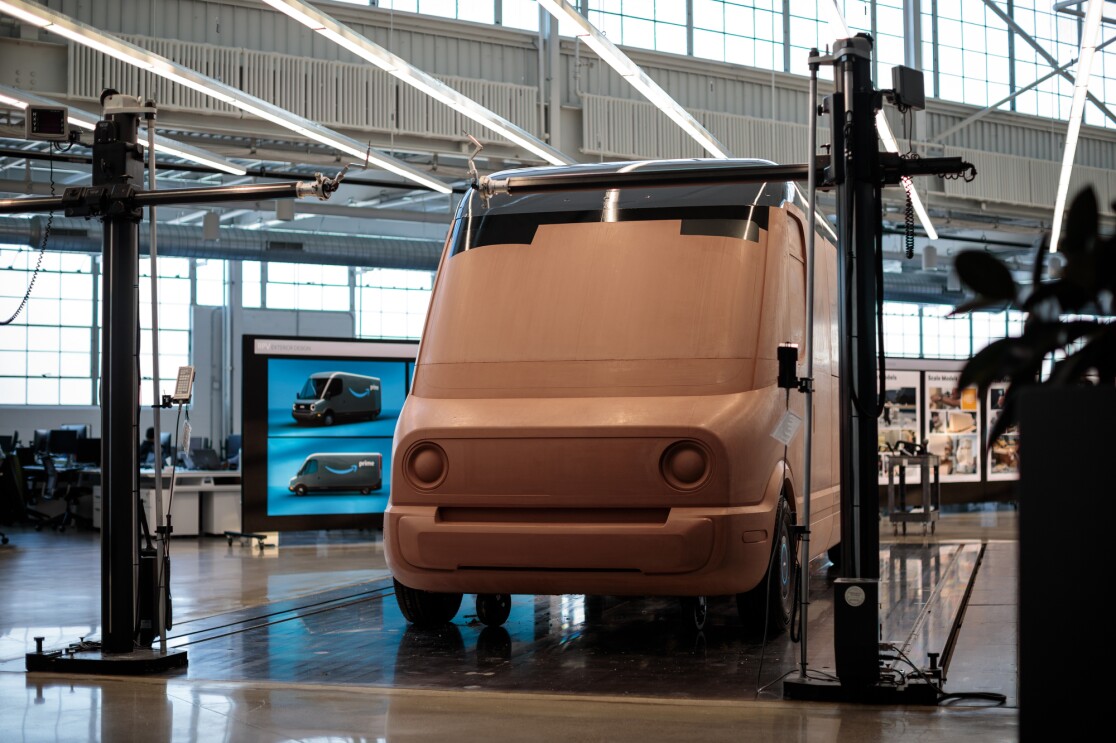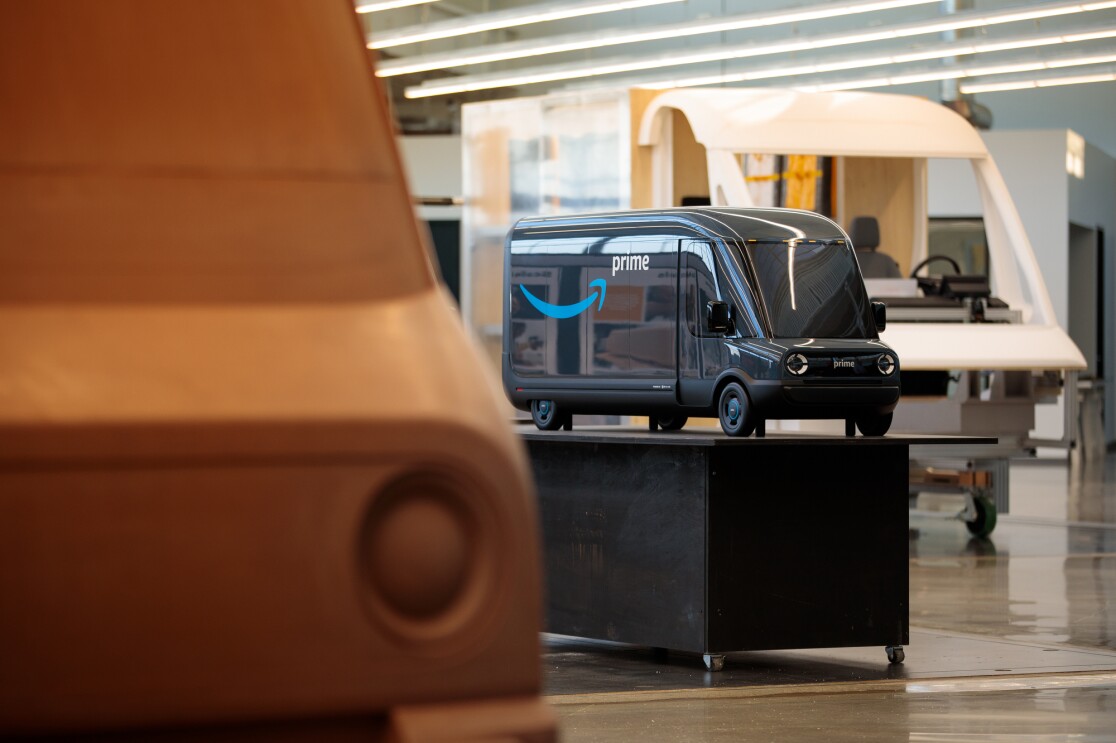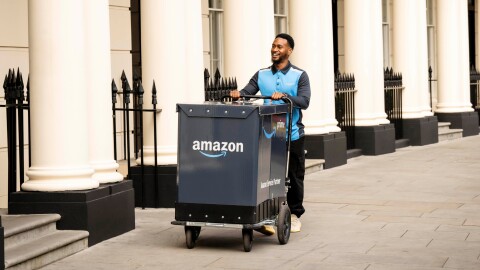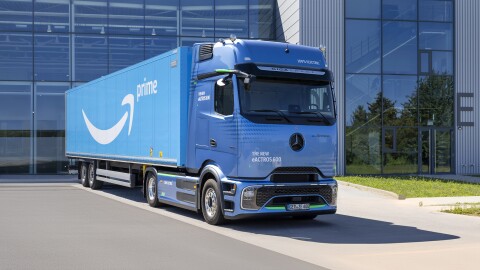A sprawling industrial complex in Michigan doesn't look anything like it did decades ago when American workers assembled automated teller machines in the building. Today, sun-drenched white walls surround a design studio. Light bounces off gleaming floors to highlight scale model vehicles that are nearing final design.
The vehicles are the next generation of Amazon delivery vans—electric-powered vehicles that will hit the roads beginning in 2021.
We’re trying to build the most sustainable transportation fleet in the world.
Amazon ordered 100,000 electric delivery vehicles—the largest-ever order of electric delivery vehicles—from Rivian, a producer of emissions-free electric vehicles with a vehicle development center in Plymouth, just outside Detroit.
The order is part of The Climate Pledge, Amazon's commitment to meet the Paris Agreement 10 years early. The pledge also calls on signatories to become net zero carbon across their businesses by 2040, a decade ahead of the Paris Accord's goal of 2050.

"We're trying to build the most sustainable transportation fleet in the world," said Ross Rachey, director of Amazon's global fleet and products. "It also needs to be the most functional, the highest performing, the safest."
Amazon's transportation team spent 18 months evaluating a variety of electric vehicle options to reduce its carbon footprint. To move quickly, Rachey's team realised the best way forward was to chart their own path and create a new, custom electric vehicle to meet Amazon's needs now and in the future.
The vehicles will reduce carbon emissions, raise the bar for driver safety, and optimise technology and design elements to create a best-in-class driver experience. Manufactured at Rivian's plant in Normal, Illinois, they'll come in three size variants and support multiple battery sizes so they can be optimised for specific delivery routes.
"We are focused on driving efficiency into every aspect of the vehicle design—everything from cabin heating to driver ergonomics to drivetrain design has been optimised for time and energy," said R.J. Scaringe, CEO of Rivian. "And then the echo effect of this, of causing other logistics players in this space to also look at how they drive up efficiency within their fleet, will have a very large impact."
Dave Clark, Amazon's senior vice president of worldwide operations, looks forward to the vehicle program's ripple effect.

"We created The Climate Pledge and are investing in 100,000 Rivian electric delivery vans to demonstrate that there is a large and growing market for green technologies," he said. "It's important that large companies like Amazon stimulate investment in the development of low-carbon products and services that will be required to help companies of all sizes decarbonise their operations and support a thriving, low-carbon economy."
Drivers who currently deliver Amazon packages informed the vehicle's design and functionality—from how the seat feels to the ease of getting in and out of the vehicles, package loading and unloading, and visibility.
Design boards featuring countless iterations of the Amazon vehicle surround Rivian's studio, where clay sculptors smooth the edges of a full-size clay model that provides a physical representation of what the vehicle will look like for production. In another room, drivers step into a virtual reality that simulates the driver experience in the new vehicles.
Each vehicle is designed to include a suite of advanced safety technology and industry-leading features, including automated emergency braking, front wheel and all-wheel drive options, lane keep assist, a pedestrian warning system, traffic design recognition, and an automatic warning system that detects and alerts distracted driver behavior.
The design incorporates Amazon's technology to offer drivers a seamless delivery experience. That includes a digital instrument cluster and central display screen integrated with Amazon's logistics management, along with routing and package delivery technology systems to make it easier for the drivers to focus on operating the vehicle. The system removes the need for extra devices that provide address and mapping information. Integrating Amazon Alexa will make it easy for drivers to ask for help or use simple voice commands in the cargo bay when sorting packages without having to manually enter commands or consult handheld devices.
Devon Cooper was invited to check out the new vehicles and share feedback with Rivian engineers. He's a Detroit-area delivery associate who works for an Amazon Delivery Service Partner to deliver packages to Amazon customers. "Everything that I suggested was already on there," Cooper said.
Amazon's new electric delivery vehicles will begin delivering packages to customers in 2021. The company plans to have 10,000 of the vehicles on the road as early as 2022 and all 100,000 vehicles on the road by 2030—saving millions of metric tons of carbon per year by 2030.






















